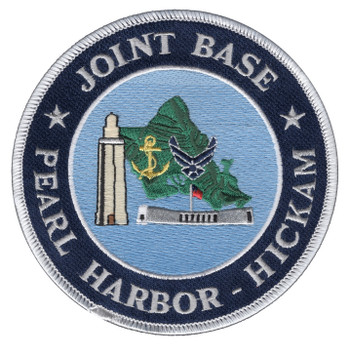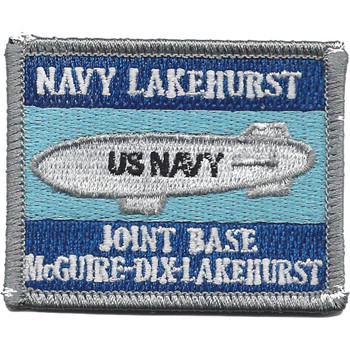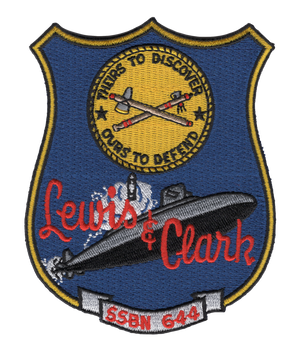Description
Joint Base Lewis-McChord Patch (U.S. Army) 4.5" x 3.5" Embroidered Patch with Iron-On Backing
Superior Materials: Made with premium polyester thread and durable twill fabric, ensuring long-lasting color and strength.
Advanced Embroidery Technology: Crafted using the most advanced embroidery machinery, guaranteeing intricate detail, sharp lines, and consistent quality every time.
Easy Iron-On Application: Features a heat-activated adhesive backing for quick, no-sew attachment. Simply position, iron, and press for a secure bond.
Versatile Use: Perfect for personalizing jackets, backpacks, uniforms, or any fabric surface that needs a touch of personality.
Durable and Washable: Designed to withstand everyday wear and occasional washing without fading or fraying.
Formations & Origins
Joint Base Lewis-McChord (JBLM) is located in the state of Washington and is a combined U.S. Army and U.S. Air Force installation. The base was formed in 2010 through the consolidation of Fort Lewis, an Army post established in 1917, and McChord Air Force Base, which dates back to 1938. The merging of the two military installations was part of the U.S. Department of Defense's initiative to streamline and optimize military bases across the country. The formation of JBLM symbolized the modern evolution of military cooperation, blending the strengths of both the Army and Air Force under one unified command. JBLM serves as a critical hub for deploying forces, training, and supporting military readiness for both domestic and overseas operations.
The patch representing Joint Base Lewis-McChord serves as a symbol of the unity between the Army and Air Force and their shared mission. The base’s history stretches back to World War I, where Fort Lewis was used as a training ground for soldiers. After the establishment of McChord, it became a key strategic location for the Air Force, particularly during the Cold War. The patch itself represents a legacy of combined operations, joint exercises, and military cohesion in a region known for its importance in both global deployments and local defense.
Notable Commanders
Over the years, JBLM has been home to many notable military leaders who have shaped both the Army and Air Force’s operations. One of the most significant commanders was General William H. "Billy" Mitchell, who advocated for air power and later played a pivotal role in the development of McChord Air Force Base. More recently, military leaders stationed at JBLM have been responsible for overseeing high-profile operations, particularly during the War on Terror, where the base served as a launch point for deploying troops to Iraq and Afghanistan.
The commanders at JBLM are often tasked with overseeing not only the Army's 7th Infantry Division but also various combat and support brigades, Air Force units, and reserve elements. Their leadership has been instrumental in integrating the Army and Air Force personnel stationed at JBLM, coordinating joint exercises, and ensuring the base's readiness for rapid deployment.
Major Campaigns/Operations
JBLM has been involved in numerous campaigns and operations over its long history, many of which have had a significant impact on the course of U.S. military history. While it initially served as a training facility during World War I, JBLM’s role became increasingly pivotal during World War II, when it became a major staging ground for troops deploying to the Pacific Theater.
In more recent history, JBLM has played a central role in deploying forces to Afghanistan and Iraq as part of the Global War on Terror. The 7th Infantry Division and other units from JBLM were heavily involved in operations like Operation Iraqi Freedom and Operation Enduring Freedom. These units were critical in the initial invasions of Iraq and Afghanistan and have continued to provide support for ongoing operations. JBLM also hosts a variety of training exercises to prepare soldiers for complex, modern warfare environments, including counterinsurgency operations, peacekeeping missions, and rapid response tactics.
JBLM’s Air Force components, particularly the 62nd Airlift Wing stationed at McChord Field, have supported a variety of strategic operations, including airlift missions and humanitarian assistance, which have ranged from transporting troops and supplies to disaster relief missions across the globe.
Specialized Role/Equipment
As a Joint Base, JBLM’s strength lies in its ability to combine the Army's ground combat capabilities with the Air Force's aviation and airlift expertise. The Army units at JBLM specialize in rapid deployment and heavy combat, with the 7th Infantry Division and 2nd Stryker Brigade Combat Team being particularly important. These units are equipped with advanced armored vehicles, including the Stryker Infantry Carrier Vehicle, which is designed for quick mobilization and mobility in combat scenarios.
On the Air Force side, JBLM houses the 62nd Airlift Wing, which is equipped with C-17 Globemaster III transport aircraft. These planes are capable of carrying oversized cargo, making them essential for rapid deployment of personnel, equipment, and vehicles. The C-17s have been crucial in supporting military and humanitarian missions worldwide.
The base is also home to specialized training facilities, including those for airborne operations and aerial transport, ensuring that both Army and Air Force personnel can train together for joint operations. JBLM is also an essential location for preparing units for multi-domain operations, where ground forces and air forces coordinate in complex combat scenarios.
Acts of Heroism
JBLM has been the birthplace and training ground for many heroes who have gone on to perform acts of extraordinary courage. One of the most notable acts of heroism associated with JBLM is the bravery displayed by soldiers in the 7th Infantry Division during Operation Iraqi Freedom. During the intense combat operations that led to the fall of Baghdad in 2003, units from JBLM faced difficult conditions and fierce resistance. The courage of these soldiers, who fought under fire to secure strategic positions, exemplified the resolve of the men and women stationed at JBLM.
Additionally, the Air Force personnel stationed at JBLM have demonstrated heroism in combat zones, particularly those flying missions into dangerous territory to deliver humanitarian aid or evacuate civilians under threat. The C-17 aircrews, for example, have flown into hostile environments to support military operations and provide logistical support in areas like Afghanistan.
Legacy & Notable Achievements
The legacy of Joint Base Lewis-McChord is rooted in its long history of military excellence, adaptability, and the seamless integration of Army and Air Force operations. Its history dates back to World War I, and it has continuously evolved to meet the demands of modern warfare. Today, JBLM is one of the largest and most strategically significant military installations in the Pacific Northwest, contributing significantly to U.S. military readiness and operational capabilities.
JBLM is renowned for its ability to quickly deploy forces, making it a crucial part of the Army and Air Force’s global strategy. The base also remains a cornerstone of joint operations training, ensuring that soldiers and airmen work together effectively in complex and high-stress environments. The legacy of JBLM’s units and personnel can be seen in their contributions to military operations, their acts of bravery in combat, and their ongoing commitment to excellence.
The installation's legacy also includes its ongoing support for military families, veterans, and the community, with numerous programs dedicated to improving the quality of life for those stationed at JBLM. The base has a strong tradition of supporting its service members both during and after their time in uniform, ensuring that the sacrifices made at JBLM continue to be honored long after service members have completed their tours. The Joint Base Lewis-McChord Patch thus represents more than just a physical location; it embodies the enduring commitment of the U.S. military to maintain readiness, forge strong partnerships, and honor those who serve.







